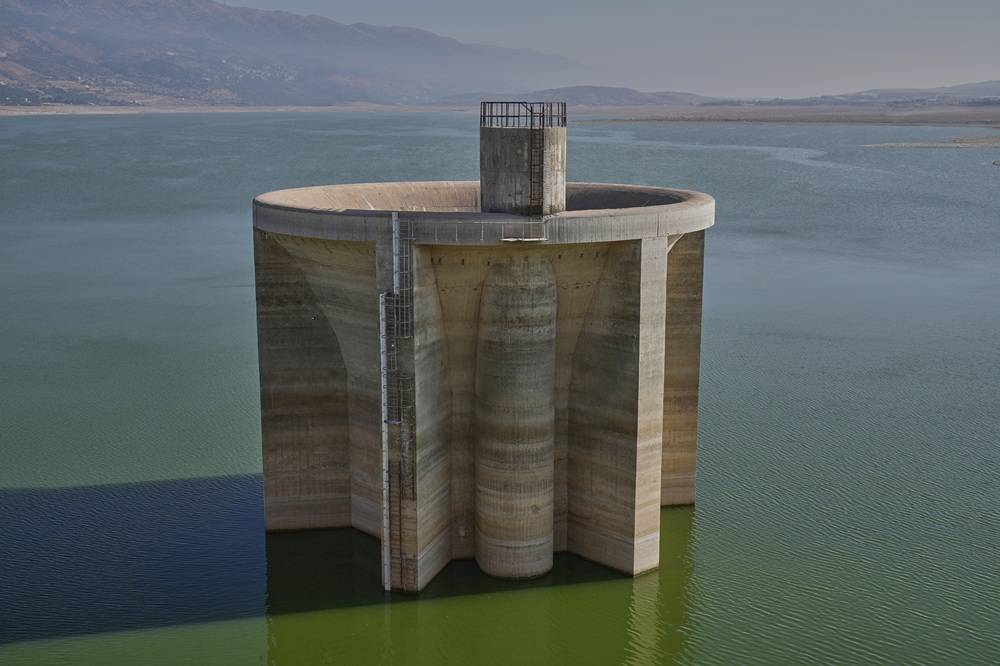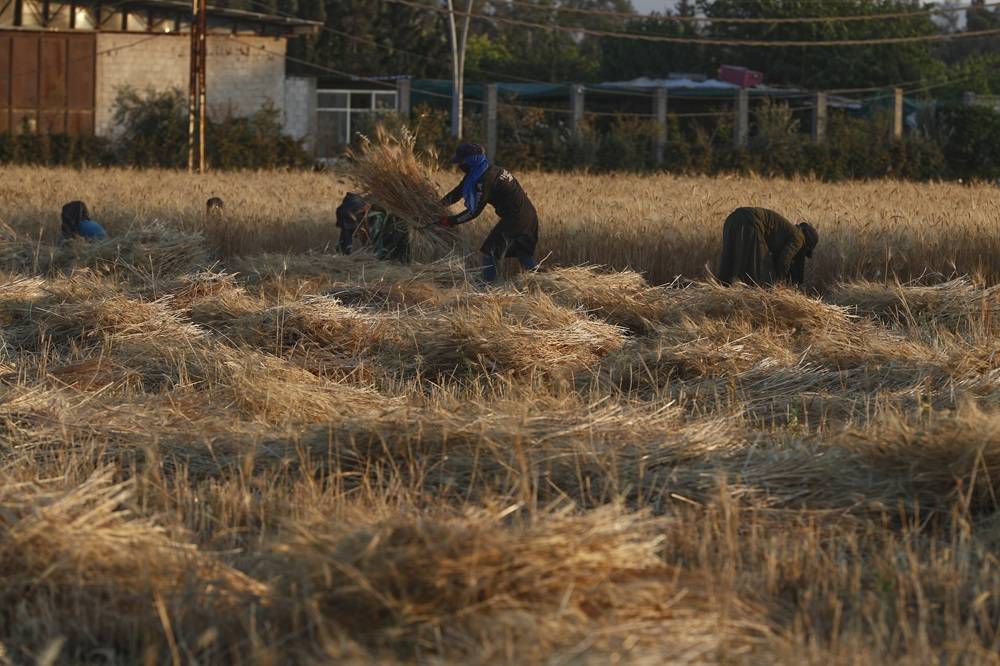Perched on a hilltop a short walk from the Israeli border, the tiny southern Lebanese village of Ramyah has almost been wiped off the map. In a neighboring village, satellite photos show a similar scene: a hill once covered with houses, now reduced to a gray smear of rubble.
Israeli warplanes and ground forces have blasted a trail of destruction through southern Lebanon the past month. The aim, Israel says, is to debilitate the Iran-backed Hezbollah armed group, push it away from the border and end more than a year of Hezbollah fire into northern Israel.
Even United Nations peacekeepers and Lebanese troops in the south have come under fire from Israeli forces, raising questions over whether they can remain in place.
More than 1 million people have fled bombardment, emptying much of the south. Some experts say Israel may be aiming to create a depopulated buffer zone, a strategy it has already deployed along its border with Gaza.
Some conditions for such a zone appear already in place, according to an Associated Press analysis of satellite imagery and data collected by mapping experts that show the breadth of destruction across 11 villages next to the border.
The Israeli military has said the bombardment is necessary to destroy Hezbollah tunnels and other infrastructure it says the group embedded within towns. The blasts have also destroyed homes, neighborhoods and sometimes entire villages, where families have lived for generations.
Israel says it aims to push Hezbollah far enough back that its citizens can return safely to homes in the north, but Israeli officials acknowledge they don’t have a concrete plan for ensuring Hezbollah stays away from the border long term. That is a key focus in attempts by the United States to broker a ceasefire.
Orna Mizrahi, a senior researcher at Israel’s Institute for National Security Studies, said Israel's immediate aim is not to create a buffer zone — but that might change.
“Maybe we’ll have no other choice than staying there until we have an arrangement that promises us that Hezbollah will not come back to the zone,” she said.
A path of destruction
Troops pushed into southern Lebanon on Oct. 1, backed by heavy bombardment that has intensified since.
Using satellite images provided by Planet Labs PBC, AP identified a line of 11 villages — all within 4 miles (6.5 kilometers) of Lebanon's border with Israel — that have been severely damaged in the past month, either by strikes or detonations of explosives laid by Israeli soldiers.
Analysis found the most intense damage in the south came in villages closest to the border, with between 100 and 500 buildings likely destroyed or damaged in each, according to Corey Scher of CUNY Graduate Center and Jamon Van Der Hoek of Oregon State University, experts in damage assessments.
In Ramyah, barely a single structure still stands on the village’s central hilltop, after a controlled detonation that Israeli soldiers showed themselves carrying out in videos posted on social media. In the next town over, Aita al-Shaab — a village with strong Hezbollah influence — bombardment turned the hilltop with the highest concentration of buildings into a gray wasteland of rubble.
In other villages, the damage is more selective. In some, bombardment tore scars through blocks of houses; in others, certain homes were crushed while their neighbors remained intact.
Another controlled detonation leveled much of the village of Odeissah, with an explosion so strong it set off earthquake alerts in Israel.
In videos of the blast, Lubnan Baalbaki, conductor of the Lebanese Philharmonic Orchestra, watched in disbelief as his parents’ house — containing the art collection and a library his father had built up for years — was destroyed.
“This house was a project and a dream for both of my parents,” he told the AP. His parents’ graves in the garden are now lost.
When asked whether its intention was to create a buffer zone, Israel’s military said it was “conducting localized, limited, targeted raids based on precise intelligence" against Hezbollah targets. It said Hezbollah had “deliberately embedded” weapons in homes and villages.
Israeli journalist Danny Kushmaro even helped blow up a home that the military said was being used to store Hezbollah ammunition. In a television segment, Kushmaro and soldiers counted down before they pressed a button, setting off a massive explosion.
Videos posted online by Israel’s military and individual soldiers show Israeli troops planting flags on Lebanese soil. Still, Israel has not built any bases or managed to hold a permanent presence in southern Lebanon. Troops appear to move back and forth across the border, sometimes under heavy fire from Hezbollah.
October has been the deadliest month of 2024 for the Israeli military, with around 60 soldiers killed.
Attacks on UN peacekeeping troops and the Lebanese Army
The bombardment has been punctuated by Israeli attacks on UN troops and the Lebanese Army — forces which, under international law, are supposed to keep the peace in the area. Israel has long complained that their presence has not prevented Hezbollah from building up its infrastructure across the south.
Israel denies targeting either force.
The Lebanese military has said at least 11 of its soldiers were killed in eight Israeli strikes, either at their positions or while assisting evacuations.
The peacekeeping force, known as UNIFIL, said its forces and infrastructure have been harmed at least 30 times since late September, blaming Israeli military fire or actions for about 20 of them, “with seven being clearly deliberate.”
A rocket likely fired by Hezbollah or an allied group hit UNIFIL’s headquarters in Naqoura on Tuesday, causing some minor injuries, said UNIFIL spokesperson Andrea Tenenti.
UNIFIL has refused to leave southern Lebanon, despite calls by Israeli Prime Minister Benjamin Netanyahu for them to go.
Experts warn that could change if peacekeepers come under greater fire.
“If you went from the UN taking casualties to the UN actually taking fatalities,” some nations contributing troops may “say ‘enough is enough,’ and you might see the mission start to crumble,” said Richard Gowan of the International Crisis Group.
The future of the territory is uncertain
International ceasefire efforts appear to be centered on implementing UN Resolution 1701, which ended the 2006 Israel-Hezbollah war.
It specified that Israeli forces would fully withdraw from Lebanon while the Lebanese army and UNIFIL — not Hezbollah — would be the exclusive armed presence in a zone about 25 kilometers (15 miles) from the border.
But the resolution was not fully implemented. Hezbollah never left the border zone, and Lebanon accuses Israel of continuing to occupy small areas of its land and carrying out frequent military overflights above its territory.
During a recent visit to Beirut, US envoy Amos Hochstein said a new agreement was needed to enforce Resolution 1701.
Israel could be trying to pressure an agreement into existence through the destruction wreaked in southern Lebanon.
Yossi Yehoshua, military correspondent for the Israeli daily Yedioth Ahronoth, wrote that the military needs to “entrench further its operational achievements” to push Hezbollah, the Lebanese government and mediating countries “to accept an end (of the war) under conditions that are convenient for Israel.”
Some Lebanese fear that means an occupation of parts of the south, 25 years after Israel ended its occupation there.
Lebanese parliamentarian Mark Daou, a critic of both Hezbollah and of Israel’s military operations in Lebanon, said he believed Israel was trying to degrade Hezbollah’s capabilities and turn the Lebanese public “against the will to resist Israeli incursions.”
Gowan, of the International Crisis Group, said one aim of Resolution 1701 was to give the Lebanese army enough credibility that it, not Hezbollah, would be seen “as the legitimate defender” in the south.
“That evaporates if they become (Israel’s) gendarmerie of southern Lebanon,” he said.











